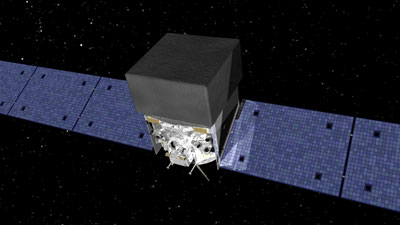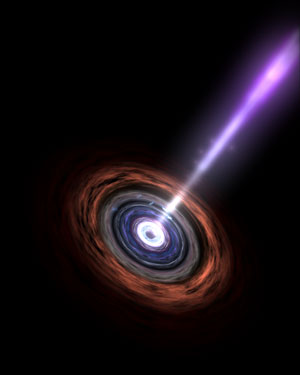12 June 2008

An artist’s conception of NASA’s Gamma-ray Large Area Space Telescope, GLAST
Credit: NASA
On 11 June 2008, NASA successfully launched the GLAST spacecraft, a new mission to explore the Universe in gamma rays. GLAST was launched aboard the powerful Delta 2 rocket, from the Kennedy Space Center (KSC), Florida.
(The acronym GLAST stands for Gamma-ray Large Area Space Telescope.)
GLAST is now orbiting Earth in a circular orbit of a radius of approximately 560 km. The spacecraft deployed its solar arrays. It is ready to begin its unique mission. GLAST is a powerful space observatory that will observe some of the most violent cosmic phenomena, such as the gamma ray bursts (GRBs), and energetic jets erupting from massive black holes.

An artist’s concept of an active galaxy’s core
Credit: NASA
Scientists expect that GLAST’s data would yield new clues to the nature of the enigmatic dark matter, a hypothetical exotic form of matter that does not emit, reflect or interact with electromagnetic radiation, and yet can only be detected through its gravitational influence on its surrounding observable objects. Modern cosmological theories estimate that about 90% of the mass of the Universe is in the form of dark matter.
Sophisticated GLAST is the first gamma-ray observatory to scan the entire sky every day. It will provide an unprecedented opportunity to learn about the ever-changing high energy Universe. GLAST will observe thousands of gamma-ray sources, most of which will be mighty black holes lurking in the cores of distant luminous galaxies.
Further Reading
NASA
www.nasa.gov/
GLAST:
http://www.nasa.gov/mission_pages/GLAST/main/index.html
Aymen Mohamed Ibrahem
Senior Astronomy Specialist